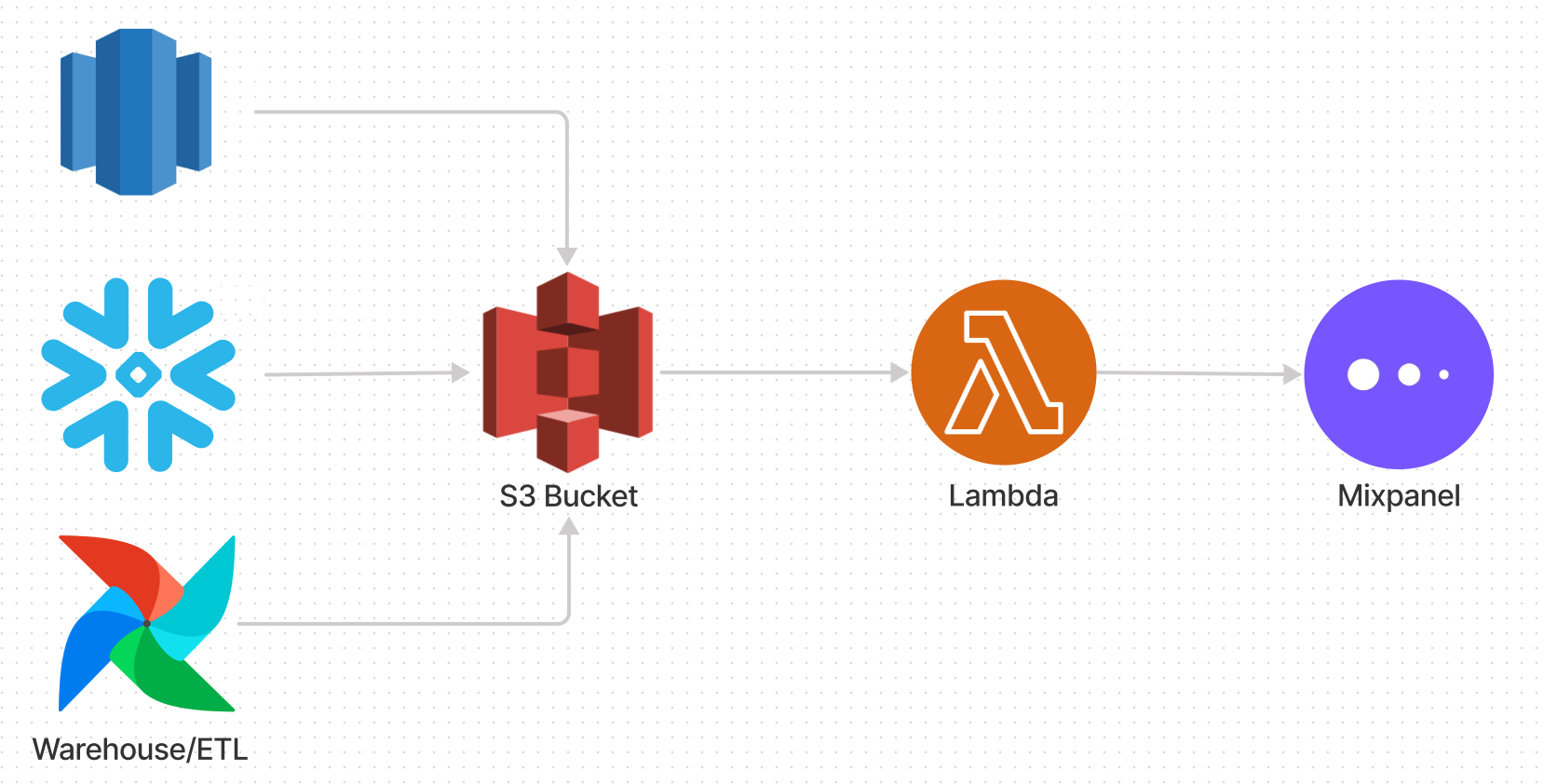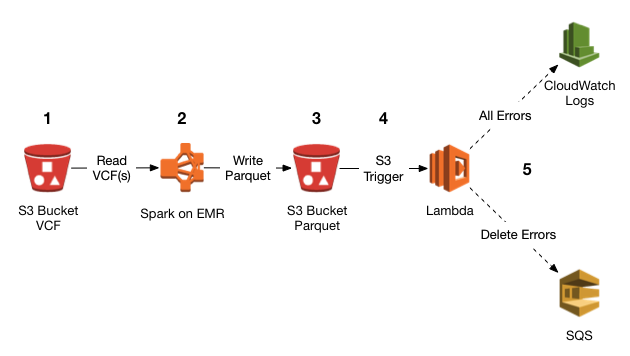This article was published as a part of the Data Science Blogathon.
Introduction
AWS provides cloud services such as storage, analytics, blockchain, enterprise machine learning, applications, and security; within this cloud environment is Amazon S3, a cloud storage solution that brings scalability, data availability, security, and performance to companies of any size through so-called “buckets,” or data containers. S3 is a critical solution for companies like Netflix.
.png)
However, this availability and accessibility bring significant risks. As an outcome of such incidents, cloud security has become a basic necessity for companies that rely on cloud environments to reduce cybersecurity and data security risks.
Security in AWS S3
Like many cloud storage solutions, AWS S3 operates on a shared responsibility model for data protection and cybersecurity. AWS cannot ensure or enforce the use of these practices. “Cloud security” wasn’t the root cause of the various data leaks and breaches of Amazon S3 buckets, but that doesn’t mean all the responsibility falls on its users.
Although AWS currently sets new buckets to be private by default, the consensus among cybersecurity experts is that S3 is designed so that it is too easy for buckets to be inadvertently configured as public. Advanced features such as authenticated user permissions and the interplay between access control lists (ACLs) and bucket policies can confuse AWS users and lead to human configuring errors. A security service focused on detecting, classifying, and protecting information within the AWS ecosystem has greatly reduced the number of misconfigured buckets. However, these tools only address the ramifications of the AWS S3 design problem. Introducing additional features that make it easier to ensure that S3 remains private is not the same as eliminating the ability to provide public access.
Integrating S3 with Other Services
Amazon, like Apple, rewards the end user for living in the ecosystem. For Apple, when you have an iPhone, it automatically pairs with your AirPods and seamlessly syncs back to your iMac. Similarly, with Amazon, the more AWS services you use, the more integrated they become. S3 is the cornerstone of these integrations because object storage is important to almost all AWS applications. You can store CloudFormation templates in S3 to be run through Lambda, deploying compute resources based on the trigger. You can also store templates in S3 for use with SNS or SES notifications. There are many applications for S3 as cloud architecture, so let’s take a deeper look at a few.
One of the popular applications of S3 is storing web files in a way that can be easily loaded by the web or even pointing a static page to an object in S3. By combining Route53 – an AWS network service – with S3, you can route web traffic to a static website hosted on S3. This allows you to avoid devoting computing resources to handling a static file.

Another way to leverage S3 with other AWS services is to help replicate storage between tenants or regions. When an object is added, removed, or modified in a source bucket, you can generate a record in CloudWatch, AWS’s monitoring solution. CloudWatch could then trigger an SNS notification and call Lambda to synchronize changes between any number of replication segments and verify that the segments are now in sync with the source.
This solution would reap dividends in customer deployment of applications that require up-to-date data, such as malware signature programs. AWS rewards serverless design by providing highly scalable services at a lower cost than traditional server computing. Pairing AWS services with S3 allows you to create a serverless architecture that supports reliable, scalable storage.
Data Protection in S3
Unlike old data storage models, cloud storage solutions make it much easier to protect the infrastructure and ensure the availability of these services. However, cloud security (user responsibility) is still essential. Ignoring best practices can have serious consequences for your company. Therefore, consider the following security measures for data protection.
Classifying and Identifying Info
Identifying the amount and type of information your company stores in S3 buckets is critical to protecting sensitive information and complying with various data protection laws. Companies working with Personally Identifiable Information, cardholder data, and other personal data subject to privacy regulations should pay close attention to the location of that information and the permissions of each segment that contains it. Tools like Amazon Macie make this process easier with machine learning that automatically inspects and classifies it.
Enable Double authentication
This cybersecurity helps f the most effectively minimize the damage caused by phishing attacks or leaking employee credentials. In this case, multi-factor authentication can be activated during the user login process or when accessing specific segments and for certain actions such as deleting segments.

Encrypt your data
S3 encrypts your data when it writes it to disks in AWS data centers and decrypts it when you access it using server-side encryption. This practice ensures that data cannot be accessed without the correct encryption keys and minimizes the damage caused by data breaches.
The client-side encryption method means you encrypt the data before sending it to AWS and decrypt it after it is retrieved from AWS. This means that AWS does not own or manage your encryption keys.
Block Public Buckets Organization-Wide
AWS Block Public Access adds a layer of security to your account along with individual buckets, even those you create in the future. Your company can limit current public access and ensure that newly created buckets do not have public access.
Enforce least-privileging access
You should also block unwanted access to S3 by enforcing least privilege access and only granting access to accounts when certain tasks are required.
AWS offers tools for establishing least privilege access, such as IAM (identity and access management), user policies with permission boundaries, segment policies, ACLs (access control lists), and service control policies.
Enable version control
S3 Versioning allows you to store and retrieve any version of any item stored in your buckets. S3 Versioning allows you to maintain multiple versions of an object in the same bucket and can help recover assets that have been accidentally deleted or overwritten. You may consider enabling this feature for specific cases, such as S3 buckets that back up sensitive data.
ZenGRC for Minimizing Risk
ZenGRC integrated governance, risk management, and compliance solution that enables businesses to automate the self-audit process. For the exam, your company may need to create various compliance attestations as part of your cloud compliance with AWSons. ZenGRC’s SaaS platform allows you to store and retrieve all your compliance documents in one place. Many AWS users must comply with regulations and industry standards such as PCI DSS, SOC, ISO, FedRAMP, and HIPAA.
ZenGRC is the single source of truth that ensures your organization is always compliant and audit-ready. Policies and procedures are audit-driven and easily found in the document repository. Workflow management features offer easy tracking, automatic reminders, and audit trails. Clear reporting and dashboards provide insight into gaps and high-risk areas.
Conclusion
Let’s see what we have learned today; AWS currently sets new buckets to be private by default, and the consensus among cybersecurity experts is that S3 is designed so that it is too easy for buckets to be inadvertently configured as public. Advanced features such as authenticated user permissions and the interplay between access control lists (ACLs) and bucket policies can confuse AWS users and lead to human error in configuring their S3 buckets.
- ZenGRC is the single source of truth that ensures your organization is always compliant and audit-ready. Policies and procedures are audit-driven and easily found in the document repository.
- Companies working with PII (Personally Identifiable Information), cardholder data, and other personal data subject to privacy regulations should pay close attention to the location of that information and the permissions of each segment that contains it.
- AWS rewards serverless design by providing highly scalable services at a lower cost than traditional server computing. Pairing AWS services with S3 allows you to create a serverless architecture that supports reliable, scalable storage.
The media shown in this article is not owned by Analytics Vidhya and is used at the Author’s discretion.






